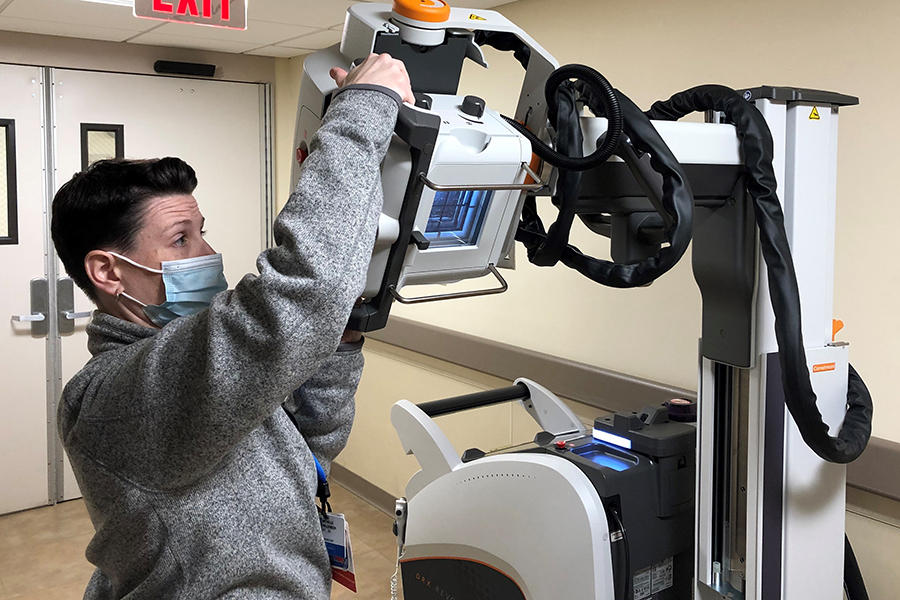
Diagnostic Radiology Supervisor Michelle Williamson, RT(R), demonstrates the Carestream DRX-Revolution Mobile X-Ray System
At Brigham and Women’s Faulkner Hospital, when a patient in the ICU, Emergency Department or other inpatient unit requires an X-ray, diagnostic radiology technologists travel to the patient’s room with a portable X-ray machine. For nearly 30 years, the team has been using the same machine. It was refurbished in 2001 and add-on technology upgraded it even further in recent years. But now that machine is being retired in favor of a brand-new machine—the Carestream DRX-Revolution Mobile X-Ray System.
The new machine features a wireless high-resolution digital detector to ensure technologists are able to capture high-quality images right there at the bedside. Those images can then be viewed by the patients’ provider at the bedside. The images also transfer immediately to Mass General Brigham’s PACS (picture archiving and communication system) where they can be interpreted by a radiologist anywhere in the system. The speed with which images can be captured and read means providers have the information they need to establish a plan of care in an instant. And for the patient, the process is extremely fast meaning they experience minimal disruption.
“We went from a Ford to a Ferrari,” says Brian McIntosh, BS, RT(R), CRA, Director of Radiology at BWFH of the new system.
Other features include a 19” touchscreen display and a modality worklist (MWL) that securely downloads the patient’s exam orders from their electronic medical record onto the portable device so that the technologist knows exactly what images to obtain.
For Diagnostic Radiology Supervisor Michelle Williamson, RT(R), one of the biggest benefits is the collapsible X-ray tube column. “With the old machine, it was hard to see around the column,” she says. “With this machine, I find it much easier to maneuver to and from patient rooms since I can see over the collapsed X-ray tube.”
Williamson also points out the tube-side controls. “You can manipulate the tube in 317 degrees and these controls allow us to position the X-ray exactly right at the bedside rather than have to walk over to the machine to make adjustments.” explains Williamson. “Simply put, you have a lot of control with features that the old machine just doesn’t have, making the entire process easier on the technologist and our patient.”
Looking for more news from BWFH? Go to News to find articles about health, updates to our programs and services and stories about staff and patients.
Go to News